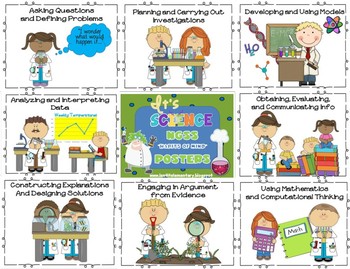

As you notice students using habits of mind, point it out, explain what you see, and how it may connect to future successes and praise them. This way, students have a habit in their mind as they work through your lesson.
3 SCIENTIFIC HABITS OF MIND SERIES
Moreover, this quick routine works well as a series of Morning Meetings, or as a quick introduction at the beginning of class. Not only is it quick, but it reaps great rewards because students who apply the habits are more successful in your content and activities. Just a few minutes of routine Habits of Mind thinking a day is very beneficial. We know time is the enemy, and we try to teach more and more content. How Can I Squeeze This Into My Already Packed Curriculum? You will notice that there are many intersections since regardless of the type of habit, they all relate to metacognition. They can easily be adapted to include the other Habits of Mind. While all of the above habits overlap and set students up for success, this guide provides specific resources to teach the 16 Habits of Mind based on ASCD’s book Learning and Leading with Habits of Mind: 16 Essential Characteristics for Success by Costa and Kallick, 2008. Her book, Mindset: The Psychology of Success kicked off a Growth Mindset movement in many schools, empowering students to reframe their thinking by teaching how the brain grows from doing challenging things. These are habits that artists use but they can also apply to all subject areas as well.Īlthough it is not called “Habits of Mind”, Carol Dweck’s 2007 work on Growth Mindset can be placed in the same category. (Develop Craft, Engage & Persist, Envision, Express, Observe, Reflect, Stretch & Explore, Understand Art Worlds). In 2003, Harvard School of Education’s Project Zero unveiled eight Studio Habits of Mind.

Furthermore, Marzano broke these habits down into three categories: Self-Regulated Thinking, Critical Thinking, and Creative Thinking. Productive Habits of Mind, or “Thinking about One’s Thinking” was the fifth of his 5 Dimensions of Learning. Without a doubt, it was a very effective way to approach and break down the components of teaching a unit. In the mid-’90s, Robert Marzano’s Dimensions of Learning was introduced to many educators. Many versions of Habits of Mind for students have been researched and published.


 0 kommentar(er)
0 kommentar(er)
